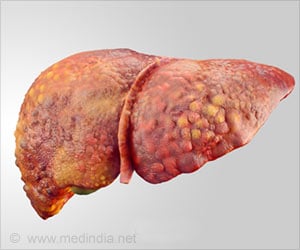Highlights
- Inhibition of hepatic microRNA-34a (miR-34a) and it's expression may help reduce liver injury and liver fibrosis in ALD patients //
- Chronic alcohol consumption can cause abnormal fat accumulation in liver cells (steatosis) and liver fibrosis, which can lead to hepatitis, cirrhosis, and sometimes liver cancer
- Up-regulation of miR-34a during alcohol consumption contributes to the development of liver fibrosis during alcoholic liver injury
- Targeting the drivers of aging and senescent cells may be a novel therapeutic strategy to reduce hepatic steatosis and liver fibrosis in ALD patients
Investigators studied liver tissue from patients with steatohepatitis, who were heavy alcohol drinkers, and from ethanol-fed mice to identify biochemical markers of cellular senescence.
Their findings indicate that up-regulation of microRNA-34a (miR-34a) during alcohol consumption contributes to the development of liver fibrosis during alcoholic liver injury.
The fibrosis-producing effects of miR-34a are related to different aging signaling in two different liver cell types. Particularly, in hepatocytes, the primary liver cells that make up 70% to 85% of the liver's mass and perform the basic functions of the liver, senescence is increased.
On the contrary, senescence is decreased in activated hepatic stellate cells (HSCs), the supportive cells which, when triggered by alcohol or other liver insults, begin to produce excessive fibrotic material.
"Understanding the mechanisms underlying HSC activation and regression has become an increased area of interest, and our findings help to advance understanding of the complex nature of this phenomenon," noted Dr. Meng.
"Targeting the drivers of aging and senescent cells may be a novel therapeutic strategy to reduce hepatic steatosis and liver fibrosis in ALD patients," commented co-author Gianfranco Alpini, PhD, Distinguished Professor in the Department of Medical Physiology at Texas A&M College of Medicine, Senior Research Scientist at Central Texas Veterans Health Care System, and Director of the BSW DDRC.
Further, co-author Heather Francis, Ph.D., Associate Professor of Medical Physiology at Texas A&M College of Medicine and member of the BSWDDRC, stated, "It is imperative to identify regulatory targets for potential treatment of ALDs, especially for populations that are greatly impacted by this disease".
Moreover, Shannon Glaser, Ph.D., Associate Professor of Medical Physiology at Texas A&M College of Medicine and member of the BSWDDRC added, "Targeting the miR-34a may also be key for managing liver fibrosis in other cholangiopathies such as primary sclerosing cholangitis as well as primary biliary cholangitis.
Our study opens the window for the possibility of linking age-related genes as therapeutics for the future."
Reference
- Ying Wan, Kelly McDaniel, Nan Wu, Sugeily Ramos-Lorenzo, Trenton Glaser, Julie Venter, Heather Francis, Lindsey Kennedy, Keisaku Sato, Tianhao Zhou, Konstantina Kyritsi, Qiaobing Huang, Tami Annable, Chaodong Wu, Shannon Glaser, Gianfranco Alpini, Fanyin Meng. Regulation of Cellular Senescence by miR-34a in Alcoholic Liver Injury. The American Journal of Pathology, 2017. DOI: 10.1016/j.ajpath.2017.08.027
Source-Eurekalert















